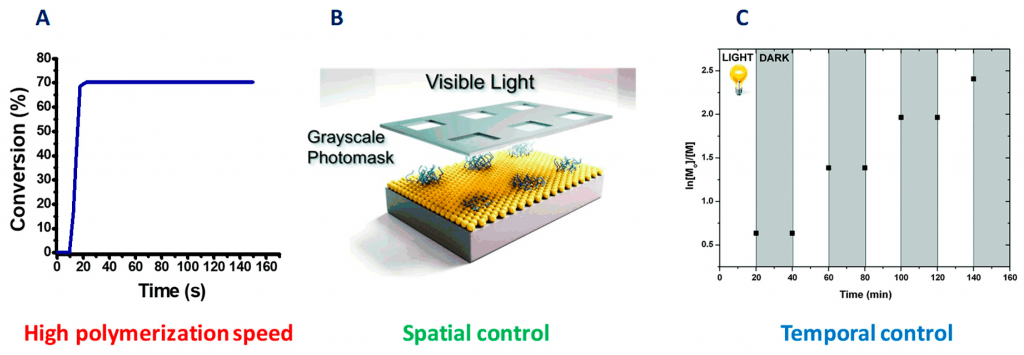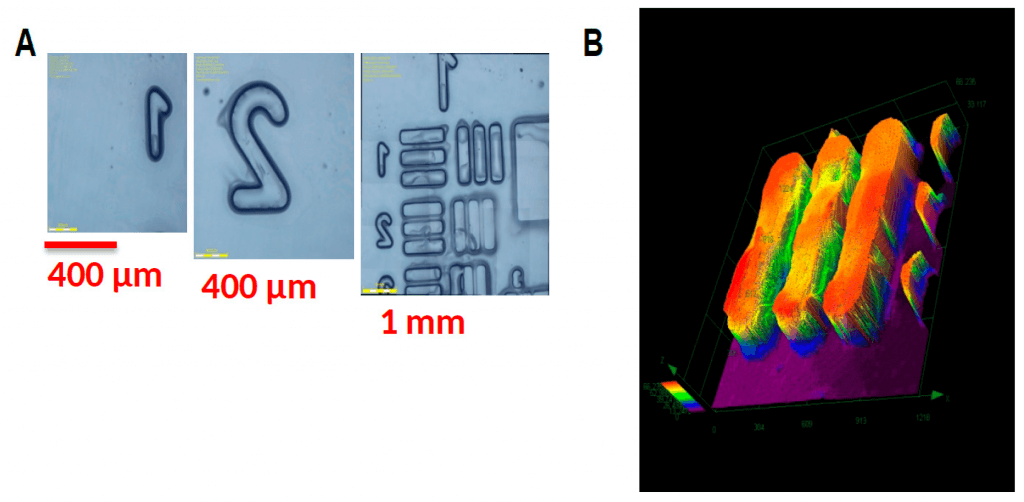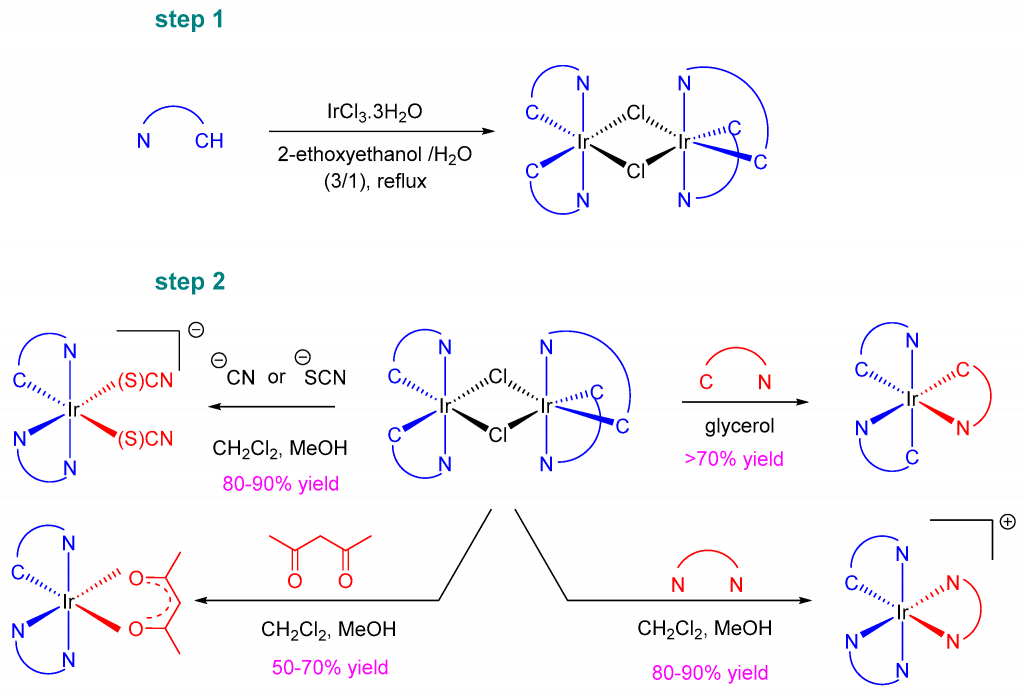In the recently published ‘Recent Advances on Visible Light Metal-Based Photocatalysts for Polymerization under Low Light Intensity,’ French researcher Frédéric Dumur investigates 3D printing processes activated by light, reviewing a variety of photocatalytic systems developed for polymerizations carried out under a low light intensity and visible light.
Photochemical reactions happen when materials that are light-sensitive are ‘excited’ by light, causing either the cleavage of a chemical bond or the production of radicals. As users continue to be concerned about toxicity and the environment, however, there has been an enormous push to reduce the use of dangerous substances—reaching toward photochemistry. Dumur points out that many photochemical reactions can be achieved without toxins.

Advantages of photopolymerization. (A) Fast monomer conversion vs. time. (B) Spatial control of the polymerization by use of a mask. Reprinted with permission of Poelma et al. [20]. Copyright © 2013 John Wiley & Sons, Inc. (C) Monomer conversion vs. time by switching on/off the light. No monomer conversion occurs when the light is off. Reproduced with permission from [21] Copyright The Royal Society of Chemistry, 2015.
“Compared to the classical organic chemistry, reactivity of photoexcited compounds significantly differs from that of the ground state so that the formation of products that could not be obtained using conventional synthetic methods is possible,” states Dumur.
The development of photochemical reactions and the availability of low-consumption irradiation setups has captured the interest of many over traditional UV-based photochemistry (along with allowing them to walk away from UV radiation hazards). New developments have occurred with visible light photoredox catalysis, substantially reducing ‘the content of light-sensitive material,’ and allowing for the potential of solving synthetic organic chemistry problems.
“When photopolymerization is carried out under visible light, an improved curing depth resulting from a better light penetration inside the resin can be obtained, and safe irradiation conditions can be used,” says Dumur.
Important work was established in photopolymerization in 2010 as the first visible light photoredox catalysis was used in polymer synthesis. After that, many such catalysts were used for the same purpose. Dumer informs us that much effort has been applied to developing photoredox catalysts.
“These constitute difficult polymerization conditions, especially for the free radical polymerization (FRP) of acrylates where oxygen acts as an efficient inhibitor of polymerization.”
Photocatalytic activity of photoinitiators is related to:
- Their absorption properties
- Their excited state lifetimes
- Their electrochemical properties
For this review study, around 70 metal-based photocatalysts of polymerization were included, delving into areas like platinum complexes, iridium complexes, zinc, copper, iron, and more.
“At present, copper or iron complexes are clearly less efficient than iridium complexes, high monomer conversions being obtained in laminate, whereas a similar performance was previously obtained with iridium complexes under air,” concluded Dumur.
“Besides, by chemical engineering, TADF photocatalysts based on copper or iron photocatalysts specifically designed for photo assisted redox polymerization have greatly improved the final monomer conversions. At present, some challenges remain concerning photopolymerization. Notably, the polymerization at long wavelength is only scarcely studied, even if it paves the way towards photocomposites. Parallel to this, controlled photopolymerization is still far behind that of the thermally controlled polymerization. These two challenges will certainly be addressed in the forthcoming years.”
Many different studies involving polymerization have been connected with 3D printing, from 3D printing with a microchip laser to fabricating microrobots, and even seeking better force for tools in atomic force microscopy. What do you think of this news? Let us know your thoughts! Join the discussion of this and other 3D printing topics at 3DPrintBoard.com.

3D-polymerization experiments with a LED projector at 405 nm (I = 110 mW/cm²). (A) different 3D figures imaged by numerical microscopy. (B) A 3D figure characterized by profilometry. Reprinted from [97]. Copyright (2019) with permission from Elsevier.
Subscribe to Our Email Newsletter
Stay up-to-date on all the latest news from the 3D printing industry and receive information and offers from third party vendors.
You May Also Like
Gorilla Sports GE’s First 3D Printed Titanium Cast
How do you help a gorilla with a broken arm? Sounds like the start of a bad joke a zookeeper might tell, but it’s an actual dilemma recently faced by...
Nylon 3D Printed Parts Made More Functional with Coatings & Colors
Parts 3D printed from polyamide (PA, Nylon) 12 using powder bed fusion (PBF) are a mainstay in the additive manufacturing (AM) industry. While post-finishing processes have improved the porosity of...
$25M to Back Sintavia’s Largest Expansion of Metal 3D Printing Capacity Since 2019
Sintavia, the digital manufacturing company specializing in mission-critical parts for strategic sectors, announced a $25 million investment to increase its production capacity, the largest expansion to its operations since 2019....
Velo3D Initiates Public Offering in a Bid to Strengthen Financial Foundations and Drive Future Growth
Velo3D (NYSE: VLD) has been among a number of publicly traded 3D printing firms that have attempted to weather the current macroeconomic climate. After posting a challenging financial report for 2023,...
































